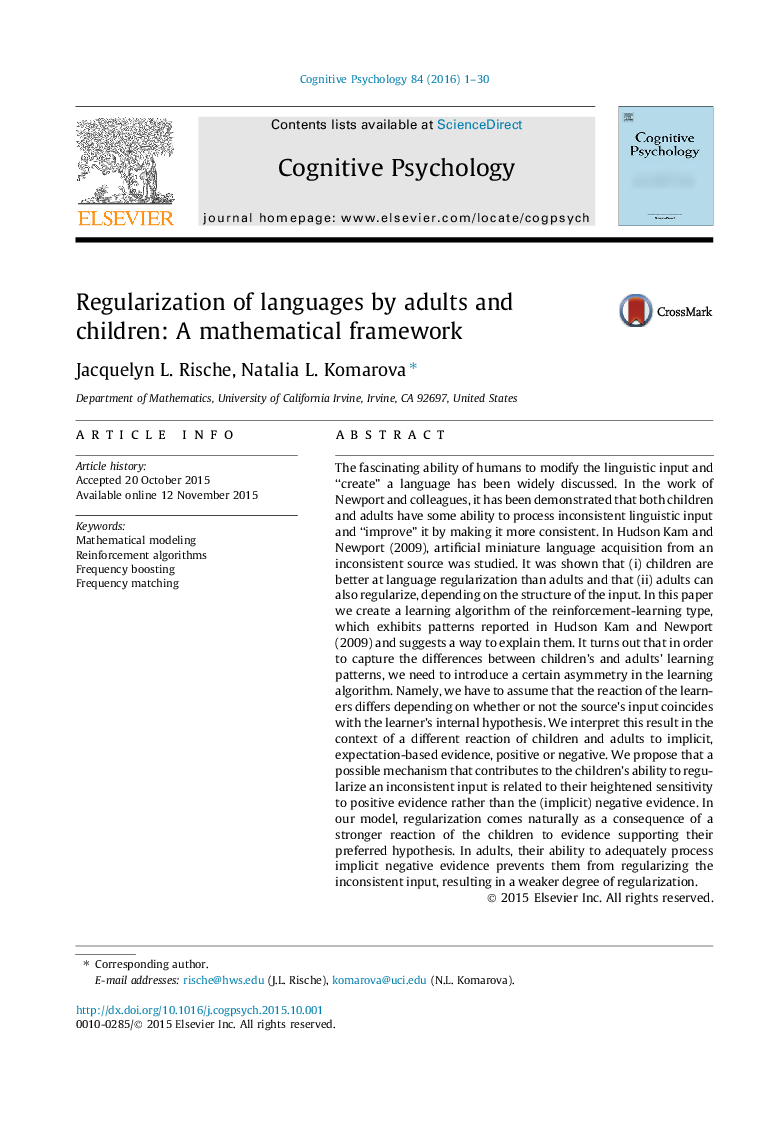| کد مقاله | کد نشریه | سال انتشار | مقاله انگلیسی | نسخه تمام متن |
|---|---|---|---|---|
| 916817 | 1473380 | 2016 | 30 صفحه PDF | دانلود رایگان |
• Mathematical model of inconsistent input regularization to explain patterns in data.
• Children react more strongly to input consistent with their internal hypothesis.
• Adults are better at processing data inconsistent with their internal hypothesis.
• This explains mathematically the children’s heightened ability for regularization.
The fascinating ability of humans to modify the linguistic input and “create” a language has been widely discussed. In the work of Newport and colleagues, it has been demonstrated that both children and adults have some ability to process inconsistent linguistic input and “improve” it by making it more consistent. In Hudson Kam and Newport (2009), artificial miniature language acquisition from an inconsistent source was studied. It was shown that (i) children are better at language regularization than adults and that (ii) adults can also regularize, depending on the structure of the input. In this paper we create a learning algorithm of the reinforcement-learning type, which exhibits patterns reported in Hudson Kam and Newport (2009) and suggests a way to explain them. It turns out that in order to capture the differences between children’s and adults’ learning patterns, we need to introduce a certain asymmetry in the learning algorithm. Namely, we have to assume that the reaction of the learners differs depending on whether or not the source’s input coincides with the learner’s internal hypothesis. We interpret this result in the context of a different reaction of children and adults to implicit, expectation-based evidence, positive or negative. We propose that a possible mechanism that contributes to the children’s ability to regularize an inconsistent input is related to their heightened sensitivity to positive evidence rather than the (implicit) negative evidence. In our model, regularization comes naturally as a consequence of a stronger reaction of the children to evidence supporting their preferred hypothesis. In adults, their ability to adequately process implicit negative evidence prevents them from regularizing the inconsistent input, resulting in a weaker degree of regularization.
Journal: Cognitive Psychology - Volume 84, February 2016, Pages 1–30
